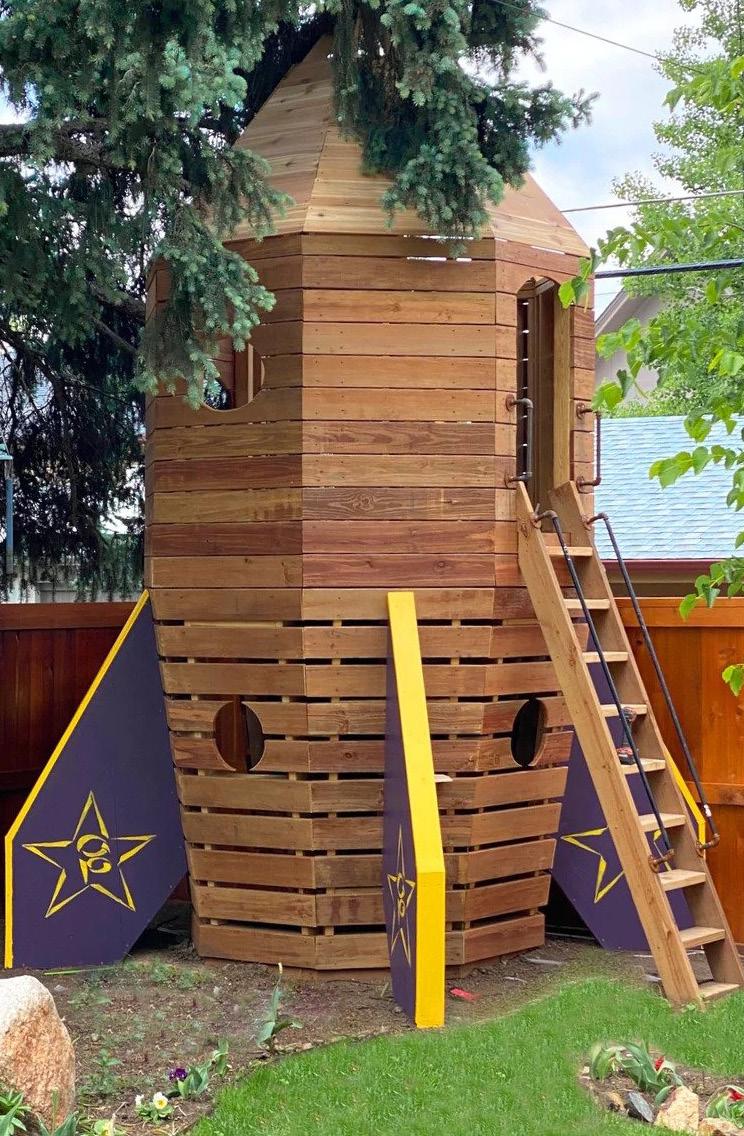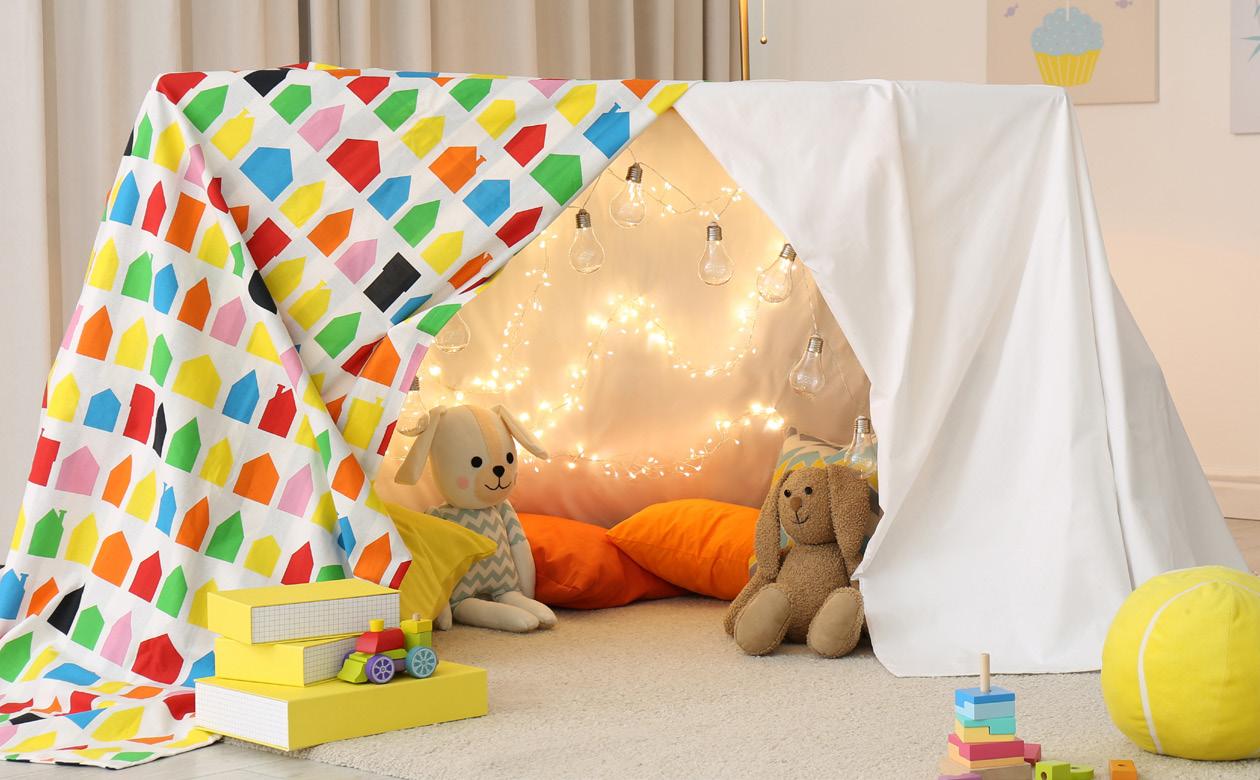
2 minute read
paulsplayhouses.com paulsplayhouses.com play’s the thing PLAYHOUSES pr omo te the power of pretend
By Julie Young House and Home Feature Writer
They are the place where adventures come to life and pinkie promises are made. They may be located inside or outside of the home. They are made of fabric, cardboard, plastic or wood and come in any number of shapes and sizes.
Go Outside And Play
The first thing any homeowner must consider when looking into a playhouse is the ages of their children. While there are a number of models geared for the “little tikes” as well as the early grades, others are designed with bigger kids in mind. It can be challenging to find one that suits everyone’s needs, by considering your child(ren)’s age, you can determine whether a ground level or “treehouse” model (often incorporated into a larger playset) is right for your family.
Experts agree a playhouse is an important part of a child’s mental and physical development. They not only encourage creativity and imagination, but they also strengthen cognitive skills and promote problem solving and social skills. Most importantly, they give children the chance to play away from the prying eyes of their parents and command a world all their own. But which kind of playhouse is right for your child/children? It depends on the age of your child and the available space you have.
The next step is to evaluate your yard to determine what size playhouse is required. Make sure to look into your HOA rules to make sure that you are allowed to have a playhouse on site and then consider your terrain to determine if you will need to build a foundation for the playhouse to sit on. (Most do not have a floor included.) Plastic playhouses are fairly durable, but you’ll want to do what you can to protect a costly wood model from rotting.

You’ll also want to consider the structure’s accoutrements. Today’s playhouses range from a basic shell to structures that include built in picnic tables, interior furnishings, and a host of other amenities to encourage play.





Indoor Entertainment
When it comes to indoor playhouse options, some parents encourage their kids to DIY their own space by creating a blanket fort or transforming a large cardboard box into their own creation. While these options do not last very long, they do inspire hours of play and may give you a sense of the type of playhouse your child needs before making an investment.



Because room is often at a premium inside the home, it’s important to look for things that are easy to set up and easy to take down such as pop up tents that can be set up in the corner of a room to create a reading nook or sturdy cardboard creations that resemble ships, castles or houses. Both of these options can be assembled and disassembled fairly easily when additional room is needed or when it’s time to put childhood things away.
For something a little more customized, parents can install a playhouse below a child’s bunk bed and incorporate it into the child’s bedroom décor. This option can easily transition when the child is older with minimum effort.
Play is a child’s business and having a space on one’s own is an important part of that work. A playhouse is more than a toy, it is an experience and one that no childhood should be without! n









